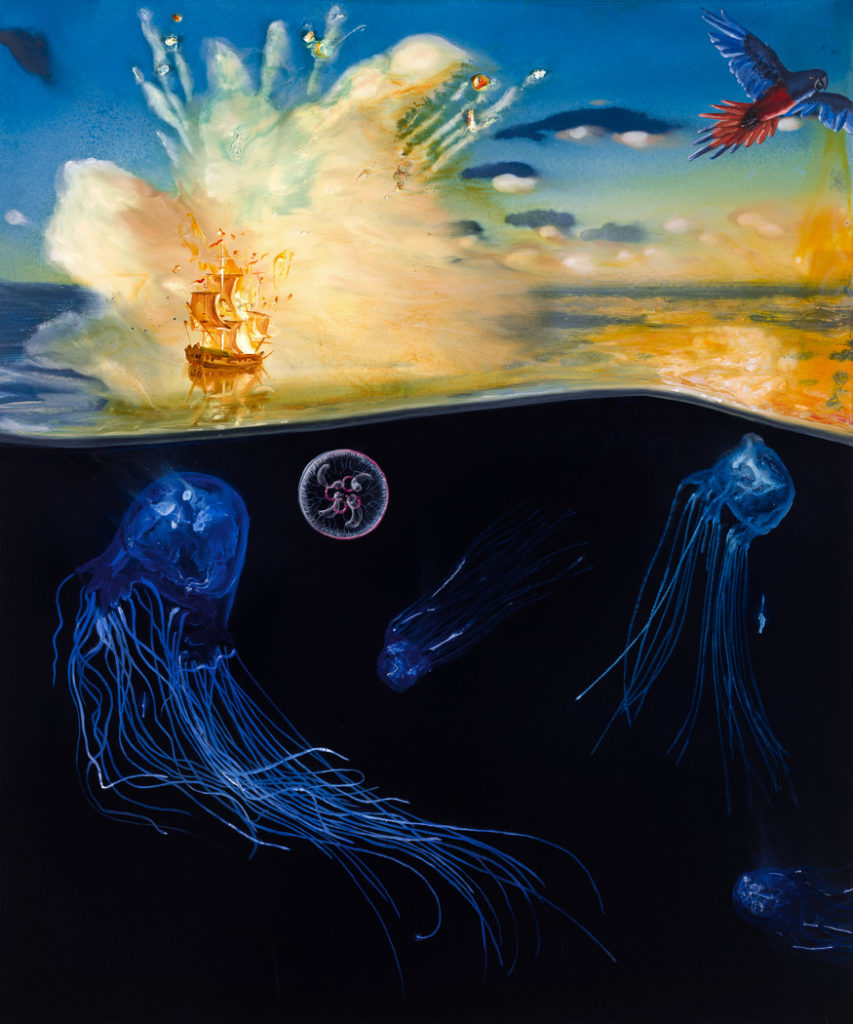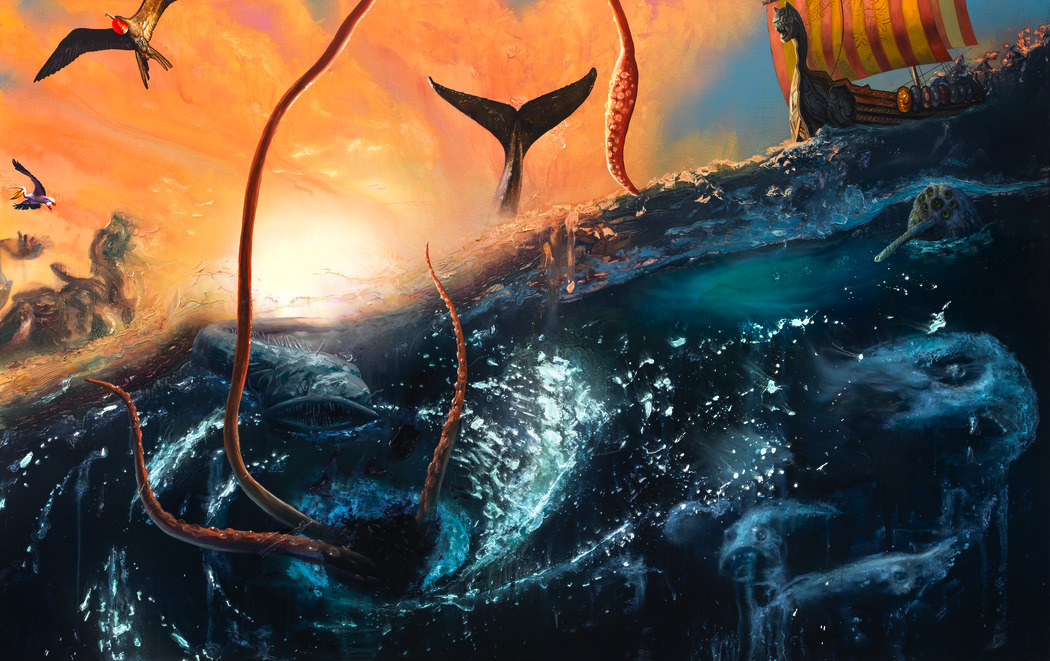This spring, the Peabody Essex Museum (PEM) presents an exhibition of large-scale, hallucinatory paintings that tackle pressing ecological issues. Alexis Rockman: Shipwrecks, on view in PEM’s East India Marine Hall from March 6 through May 31, updates and transforms the tradition of maritime painting to create powerful meditations on migration, climate change, and species extinction. Curated by Andrea Grover of Guild Hall in East Hampton, New York, the exhibition kicks off PEM’s new Climate + Environment Initiative which addresses our changing relationship to the natural world in order to encourage reflection, inspire conversation, and spark action. Learn more at pem.org/climate-environment.
“As 18th-century founders of the East India Marine Society (PEM’s originating organization) well knew, potential disaster loomed large over sea voyages,” says Daniel Finamore, PEM’s Associate Director — Exhibitions and The Russell W. Knight Curator of Maritime Art and History. “Using narrative drama and an encompassing scale, Rockman grabs the viewer’s attention, compelling us to study the details of historical catastrophes and heed an important ecological warning: disaster is looming and we must proceed with caution.”

Rockman draws upon imagery from historical paintings, like those in PEM’s maritime collection, and reimagines the scenes with compelling compositions that highlight ecological impact. His 2017 painting, The Sinking of the Brig Helen, vividly revives a 19th-century tragedy. After British naturalist Alfred Russel Wallace dedicated four years to biological research in the Amazon rainforest, his ship, the brig Helen, caught fire in the middle of the Atlantic on its return to London. While the crew gathered essentials onto lifeboats, flames engulfed Wallace’s extensive animal and plant collections, detailed notes, and scientific drawings. The fire consumed thousands of his specimens—butterflies, moths, beetles, ants, and anteater and manatee skeletons—and several living monkeys, parrots, macaws, and other birds perished.
“The historical catastrophes that Rockman references may have receded in our collective memory, but his works point to how our increasingly interconnected modern world has come to be at the expense of the planet,” says Trevor Smith, Associate Director – Multisensory Experience and Curator of the Present Tense. “By making historical events feel urgent and pressing, Rockman invites us to reflect on how our present day ecological activity will be regarded by those in the future.”
“Through the lens of the shipwreck, Alexis Rockman examines the complexity of the human psyche, the rearrangement of material culture and economies, and the exploitation of life, with its intended and unintended consequences. His paintings awaken imagination to the colossal impact of the Anthropocene, and with any luck inspire better stewardship of the planet,” says Andrea Grover, Executive Director of Guild Hall, where the exhibition will be on view June 13 through July 19, 2021.
The exhibition is accompanied by the catalogue Alexis Rockman: Shipwrecks (DelMonico Books, 2021), edited by Andrea Grover, with an introduction by Daniel Finamore and Trevor Smith, and contributions by Sasha Archibald, Chanda Laine Carey, and Brett Littman.
Alexis Rockman (born 1962) is a contemporary American painter. He studied at the Art Student’s League and the Rhode Island School of Design before earning a BFA at the School of Visual Arts in 1985. He had a mid-career retrospective at the Smithsonian American Art Museum in 2010. Rockman currently lives and works in New York, New York and Warren, Connecticut.
For more information, visit pem.org/exhibitions/alexis-rockman-shipwrecks.

